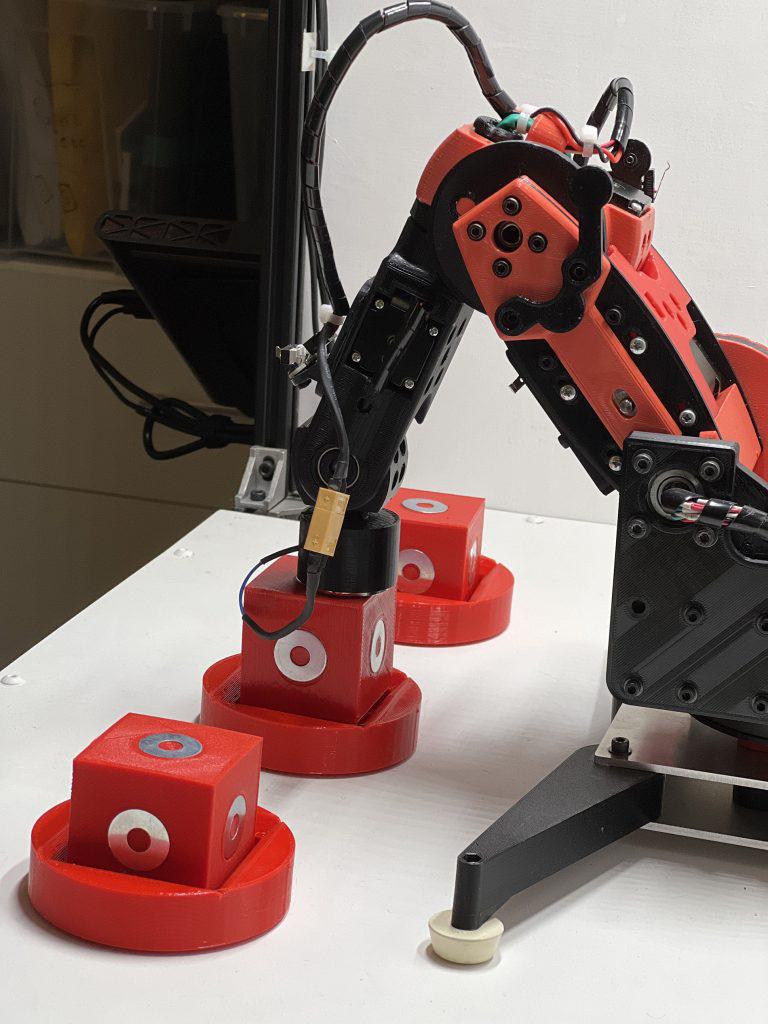Two university students stuck in pandemic lockdown during a semester abroad fell in love — and then came up with an idea that could change the way scientists and engineers around the world conduct their research.
Ahmed Kamel, an Egyptian computer science student, and Bukle Unaldi, a Turkish neuroscience major, met at Minerva University in San Francisco and were studying in Buenos Aires in 2020. Then the pandemic hit, keeping them from the lab work their degrees required. They channeled their stress into a solution: making a robotic arm that could be viewed and operated remotely, simulating an in-person laboratory experience.
Their innovation promises to be such a boon to researchers — especially from developing countries or underprivileged groups with limited access to equipment and laboratories — that the 2021 Imagine Cup judges chose the project to advance to the competition’s prestigious World Championship.
Now in its 20th year, Microsoft’s unique global technology event has had more than 2 million students from 160 countries compete for prizes including training, mentorship, technology, publicity and cash. This rich history has supported the next generation of developers and creators as they contribute to the tech industry and devise solutions for global problems.
“The most important thing wasn’t the money or awards but the credibility the experience gave us for our project as well as for our résumés, to help us get jobs after we graduated last year,” says Kamel.
Adds Unaldi: “Having the support of Microsoft and the recognition from showing our project to the world felt really empowering, and with that boost we managed to put a team together to work on it even further.”
More than 600 university students have used the robot, which the newly married couple patented last year. They set it up as a “third roommate” in their apartment while they look for office space in Seattle, where Kamel got a job as a robotics engineer for Amazon and Unaldi as a remote teacher for Elite Open School. They keep the robot connected 24/7 to accommodate any time zone and are creating a company, Hands-On Labs, as they prepare to expand to online K-12 schools.
The winner of this year’s Imagine Cup will be announced May 24 at Microsoft’s annual Build conference, where students can attend free, specially curated virtual sessions to learn alongside professional developers.
Once dubbed “the Olympics for software design” by a WIRED magazine writer, the Imagine Cup now offers the world champion $100,000 cash, technology support and a mentorship session with Microsoft CEO Satya Nadella. This year, it’s drawn a broader range of competitors than ever: 67% of teams include women, and 17% are made up of high schoolers instead of the traditional university-aged students.
“Our Imagine Cup competition is a great example of the possibilities,” says Nadella, who served as a judge during his first year as CEO in 2014 and has mentored every world champion since. “For 20 years, students have shown us what’s possible when they come together to apply technology to help solve the world’s challenges.”

Last year’s grand prize winner was Team REWEBA, which crafted its name from “Remote Well Baby.”
The team members were volunteering in a hospital while studying applied computing technology at a university in Kenya when they saw the challenges faced by new mothers in rural areas. Long travel times to the hospital led to skipped monthly post-natal screenings and contributed to a high infant mortality rate. The group realized it was a problem technology could tackle and created an internet-connected monitoring device that health workers in villages can use to remotely collect a baby’s weight, height and temperature. The integrated device automatically sends the data to doctors, serving as an early warning intervention system to save babies’ lives.
“It’s a very emotional problem,” says Jeet Gohil, now a software developer who’s shepherding the prototype through production with teammate Abdihamid Abdi so it can be distributed for commercial use. “We have seen the mothers and babies suffering, and we wanted to really help them.”
The team met weekly with mentors from Microsoft to improve the prototype’s software throughout the Imagine Cup. And the event’s high visibility brought a strong community and networking opportunities that opened numerous doors, says Khushi Gupta, who’s now studying in Texas and recently applied for a patent for the group’s work.
Yet Imagine Cup teams often gain regardless of where they place in the competition.
Zbyněk Poulíček was a runner-up in 2010 with his collaborative map — a new concept at the time — that had just enabled Czech rescue teams to guide each other toward victims trapped in rubble from a massive earthquake in Haiti. It provided navigation in difficult terrain amid the absence of identifying geographic features that had collapsed in the tremors. Poulíček had seen TV coverage of the disaster in Haiti and, in a burst of inspiration and youthful audacity, reached out to the head of a Czech nonprofit. He got an immediate call back: They needed his concept, and they needed it now.
“I realized that technology really could make a difference,” Poulíček says.
Microsoft cofounder Bill Gates featured the project in a blog post, holding it up as an example of the real-world impact Imagine Cup ideas can have, and Poulíček was invited back to give a motivational speech at the 2011 event. He and his team felt not only the responsibility but the confidence to continue improving their prototype and founded GINA Software, an acronym for Geographic Information Assistant.
Being in the Imagine Cup World Championship and getting feedback from competitors all over the globe helped prepare Poulíček for being CEO of a company that now does business in more than 50 countries, with more than 250,000 active users from humanitarian organizations and first-responder units.
“If it wasn’t for the Imagine Cup, I wouldn’t have believed I had the power to create something that can have global impact,” Poulíček says. “Now GINA is used worldwide in the most difficult situations, helping hundreds of thousands of users to stay safe.”
The competition originally was intended to get students excited about technology. The focus has narrowed over the years to building actual solutions in the categories of earth, education, healthcare and lifestyle, and projects have evolved as technology has become more accessible. Students’ entries are more sophisticated and complete, with some quickly attracting funding and becoming commercial products.
But that’s not the ultimate goal.
“The Imagine Cup is associated with our core mission: How do we help students achieve more?” says Charlotte Yarkoni, who oversees student developer programs as Microsoft’s president of Commerce and Ecosystems within the Cloud and Artificial Intelligence division. “It’s been a way to help that ecosystem and the community at large. When you reflect on the deeply personal reasons the students have come to the table, how they’re trying to help an underserved group or a community in need or even a relative, it’s been truly astounding to me. The sheer amount of innovation and the pace of innovation is unbelievable.
“This is something Microsoft is deeply invested in, empowering tomorrow’s workforce and decision makers,” Yarkoni says. “The ultimate gauge is, are we helping students go out and make an impact?”




